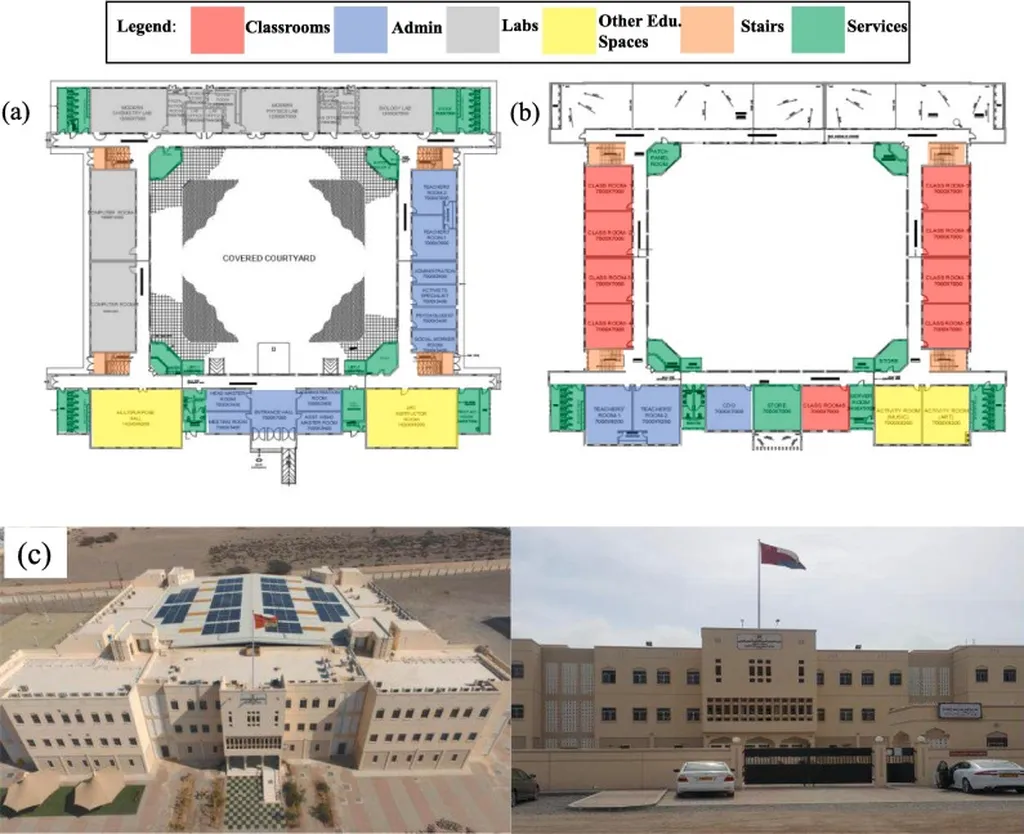In the face of escalating energy demands and climate change, researchers are turning to innovative strategies to curb consumption in energy-intensive sectors. A recent study published in the *Journal of Engineering Sciences* (JES), led by Mohamed Hassan from Giza, Egypt, offers a promising approach to optimizing energy efficiency in existing public schools, particularly in hot climates like those found in Egypt. The research could have significant implications for the energy sector, offering a blueprint for reducing consumption in educational buildings and beyond.
Hassan and his team employed computational modeling to evaluate various energy-saving scenarios for a public school in Hurghada, a city in the Red Sea Governorate known for its arid climate. The study focused on implementing the Nearly Zero-Energy Building (nZEB) concept, which combines enhanced building envelope performance with renewable energy integration.
“Our goal was to demonstrate that significant energy savings can be achieved through a combination of targeted improvements and renewable energy adoption,” Hassan explained. The researchers explored several scenarios, including thermal insulation upgrades for roofs and walls, enhanced window efficiency, optimized HVAC systems, and the integration of photovoltaic solar systems.
The results were striking. By improving the building envelope alone, the team projected a 45% reduction in energy consumption. When renewable energy systems were incorporated, this figure rose to an impressive 65%. These findings suggest that similar strategies could be applied to other educational buildings in hot-arid regions, potentially leading to substantial energy savings and reduced carbon emissions.
For the energy sector, the implications are profound. As buildings account for a significant portion of global energy consumption, optimizing their performance could alleviate pressure on energy grids and reduce reliance on fossil fuels. The study’s methodology provides a framework for other researchers and policymakers to follow, offering a roadmap for achieving energy efficiency in existing structures.
“Educational buildings are a critical component of our infrastructure, and optimizing their energy performance is not just an environmental imperative but also an economic one,” Hassan noted. By reducing energy consumption, schools can allocate resources more effectively, freeing up funds for other essential services.
The study’s findings align with a growing trend in the construction industry toward sustainable design and energy efficiency. As governments and organizations worldwide set ambitious targets for reducing carbon emissions, research like Hassan’s will be instrumental in shaping future developments. The integration of renewable energy systems and improved building performance could become standard practice, driven by both regulatory requirements and economic incentives.
In conclusion, Hassan’s research offers a compelling case for the adoption of nZEB principles in educational buildings. By leveraging computational modeling and renewable energy integration, significant energy savings can be achieved, benefiting both the environment and the economy. As the energy sector continues to evolve, such innovations will be crucial in meeting global sustainability goals.

